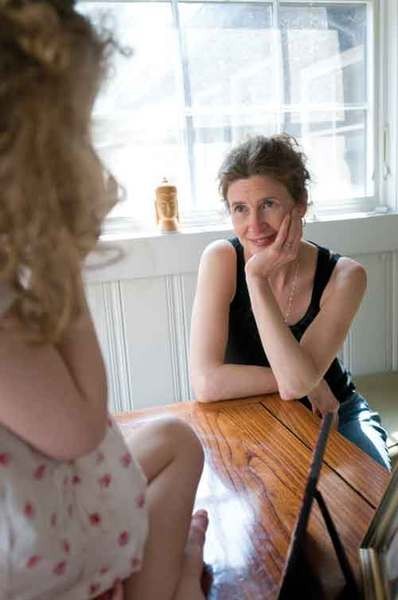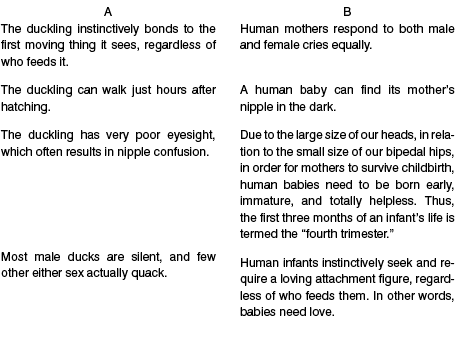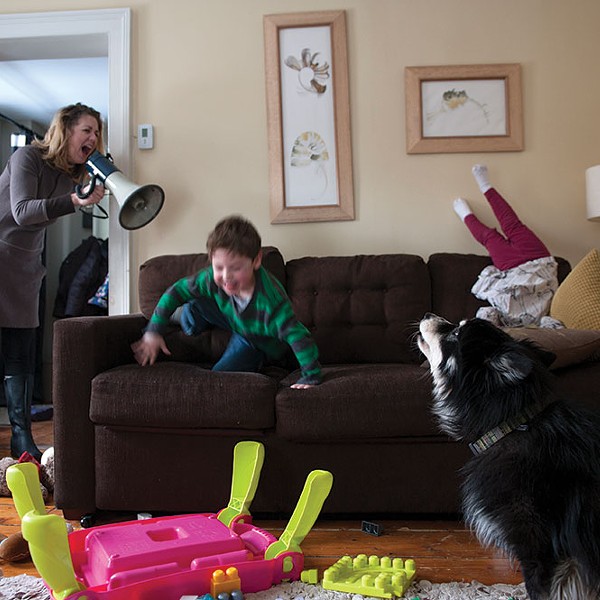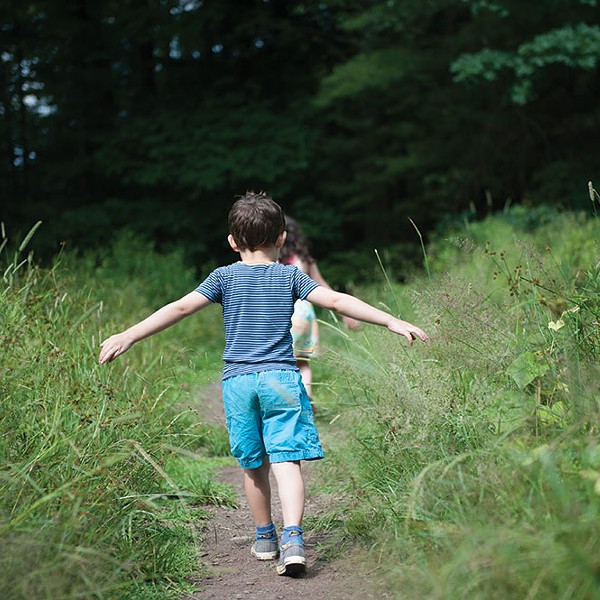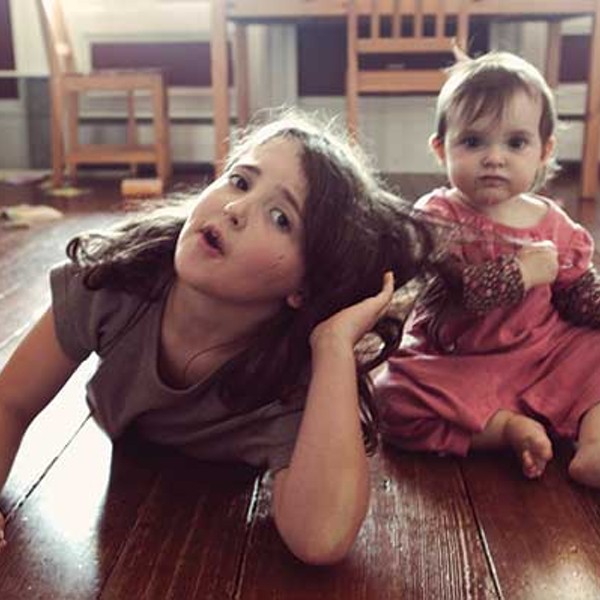In the last two issues, I wrote about the anniversary trip T and I took to Italy without five-year-old A (who is going into kindergarten this month and will now receive the privacy of an abbreviation), and how A responded. Since part of my process included describing Naomi Aldort and her mega-attachment-parenting-style comments on so-called separation anxiety, quite a few people have opened up to me about their own parenting styles and thoughts about “attachment parenting,” the term coined by Dr. William Sears, the pediatrician who turned so many of us on to baby-wearing and family beds. While what Sears points to is true—yes, babies develop most happily within the secure base of a physically close, well-attuned caregiver—he has created an unfortunate schtick, making it seem like if you don’t follow his suggestions, you won’t be bonding with your child. As if there is any kind of parenting other than “attachment parenting.”
Research in psychology and neuroscience shows that attachment is a human process, for which we all hard-wired. And like other instinctive processes such as walking or talking, the process can go well, or not so well, depending on our parents, our genetics, or, according to other fine folks, our karma. I appreciate the good work Sears has done in sharing his, shall we say, streamlined approach to attachment, but I feel frustrated that it is presented in such a way as anyone might feel Oh, attachment’s not for me. When in fact, if we removed attachment from the parenting equation, however we manifest our own flavor of it, we are left with a pretty rote, if not sociopathic, mode of raising human beings. The point is this: We humans attach to others, to varying degrees of success. With our without Dr. Sears’ advice.
And so in honor of the upcoming school year, let’s take a quiz about where all this attachment stuff comes from.
1) In developmental psychology, “attachment” refers to:
A) The early bond between mother and infant.
B) Proof to some that women should not work “outside of the home.”
C) An instinctive, empirically study-able bonding style that babies learn in relation to their mothers that can be categorized (secure or insecure, and within insecure, attachment can be avoidant, ambivalent, or disorganized) and used as a predictor of later behaviors, and also repaired in adulthood.
D) All of the above.
2) “Cupboard Love” was a term used by Anna Freud (1895-1982), daughter of Sigmund and child therapy pioneer, to refer to:
A) Childhood obesity.
B) The fact that children love their mothers because they feed them.
C) When a young girl’s Oedipal urges are sublimated and surface as an obsession with food.
D) An early term for male homosexuality, which was considered the result of prolonged breast feeding. This evolved into the term “in the closet.”
3) What did attachment founder John Bowlby think most significant in a newborn duckling’s behavior, and how did this observation inform his radical concept of attachment? (First choose what he noticed from column A, and then draw a line to how it relates to humans in column B)
4) Before John Bowlby’s attachment theory gathered mainstream acceptance in the 1970s, many therapists and analysts believed:
A) Early separations from mothers, even through death, didn’t necessarily affect a child.
B) Neurosis was the result of thwarted and complex inner drives more than relationships with others.
C) Conditions in the home, unless in cases of extreme violence or neglect, were irrelevant in understanding a child’s behavior.
D) All of the above.
5) Which expert said this: “There were very loving mothers who had bottle-fed their babies and some very rejecting mothers, women who were obviously very hostile, who had breast-fed their babies.”
A) John Bowlby (1907-1990), the founder of attachment theory.
B) William Sears (1939- ), the founder of attachment parenting.
6) One of the most common reasons for an insecure attachment between a mother and her child is:
A) The child was placed in an electronic bouncy chair.
B) The mother had an insecure attachment with her mother.
C) The child was sleep trained.
D) The mother did not provide enough “floor time.”
7) The Buddha taught that in order to free ourselves, we must renounce all worldly attachments, including our children. Where does this leave us?
A) Stuck in the wheel of samsara forever.
B) Hoping our kids will understand that our love of (and obsession with) the dharma is for their own good.
C) Attaining merit by serving the monks in our communities, and praying to be reborn in conditions more ripe for liberation (i.e., male, single, childless).
D) It’s a good question.
Answers
1) D 2) A 3) A: The duckling instinctively bonds to the first moving thing it sees, regardless of who feeds it. B: Human infants instinctively seek and require a loving attachment figure, regardless of who feeds them. Babies need love.
4) D 5) A 6) B 7) D
A) Early separations from mothers, even through death, didn’t necessarily affect a child.
B) Neurosis was the result of thwarted and complex inner drives more than relationships with others.
C) Conditions in the home, unless in cases of extreme violence or neglect, were irrelevant in understanding a child’s behavior.
D) All of the above.
5) Which expert said this: “There were very loving mothers who had bottle-fed their babies and some very rejecting mothers, women who were obviously very hostile, who had breast-fed their babies.”
A) John Bowlby (1907-1990), the founder of attachment theory.
B) William Sears (1939- ), the founder of attachment parenting.
6) One of the most common reasons for an insecure attachment between a mother and her child is:
A) The child was placed in an electronic bouncy chair.
B) The mother had an insecure attachment with her mother.
C) The child was sleep trained.
D) The mother did not provide enough “floor time.”
7) The Buddha taught that in order to free ourselves, we must renounce all worldly attachments, including our children. Where does this leave us?
A) Stuck in the wheel of samsara forever.
B) Hoping our kids will understand that our love of (and obsession with) the dharma is for their own good.
C) Attaining merit by serving the monks in our communities, and praying to be reborn in conditions more ripe for liberation (i.e., male, single, childless).
D) It’s a good question.
Answers
1) D 2) A 3) A: The duckling instinctively bonds to the first moving thing it sees, regardless of who feeds it. B: Human infants instinctively seek and require a loving attachment figure, regardless of who feeds them. Babies need love.
4) D 5) A 6) B 7) D







